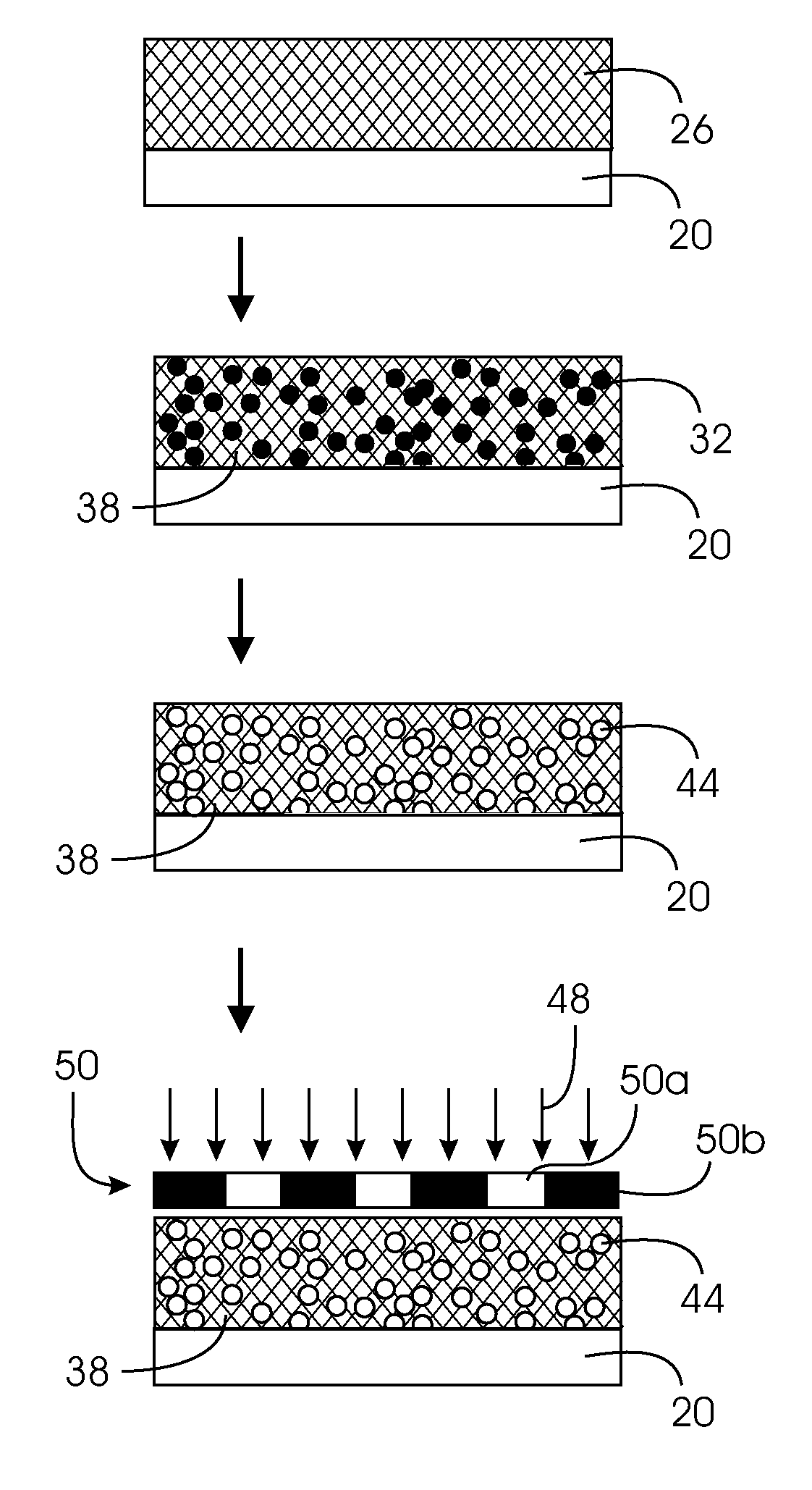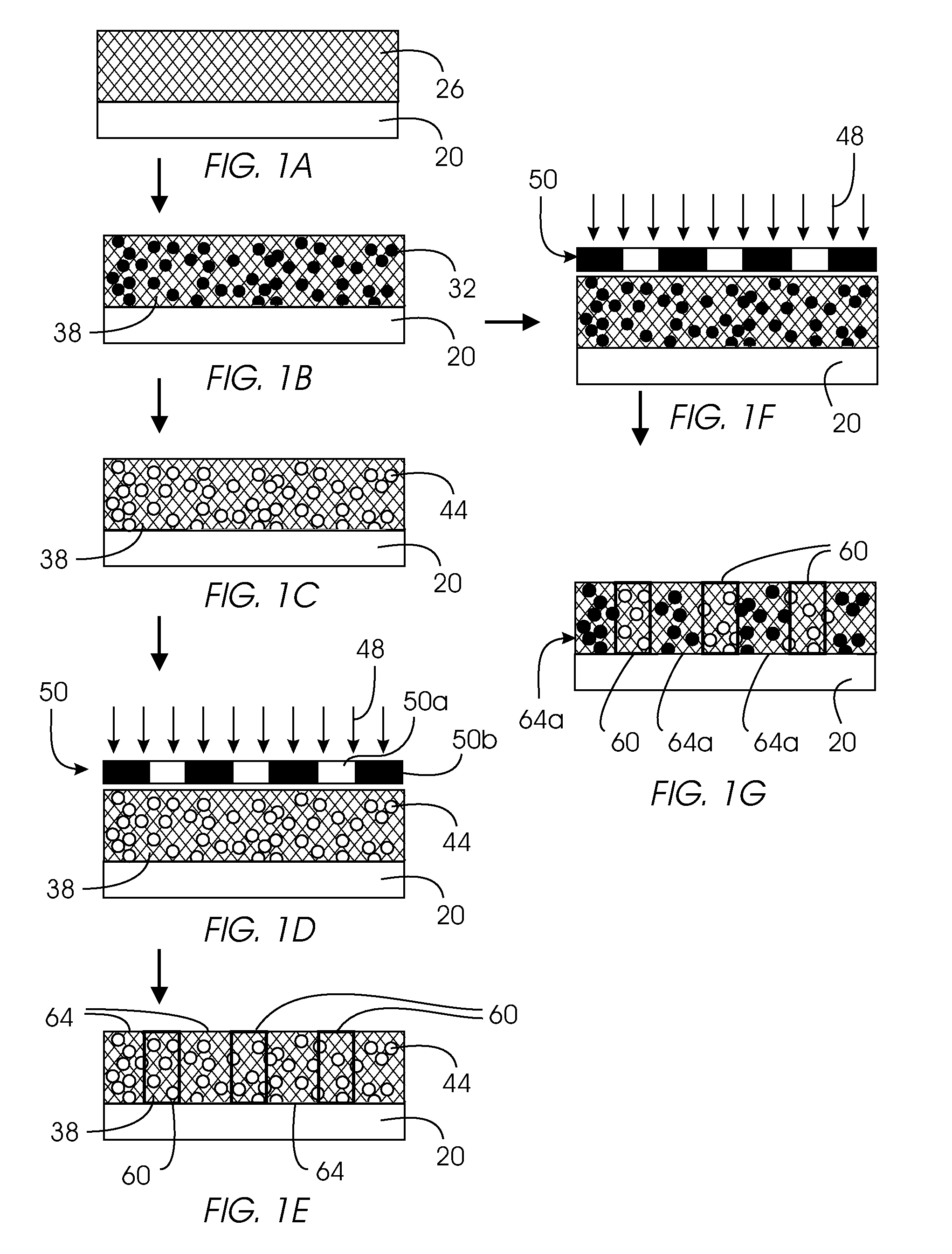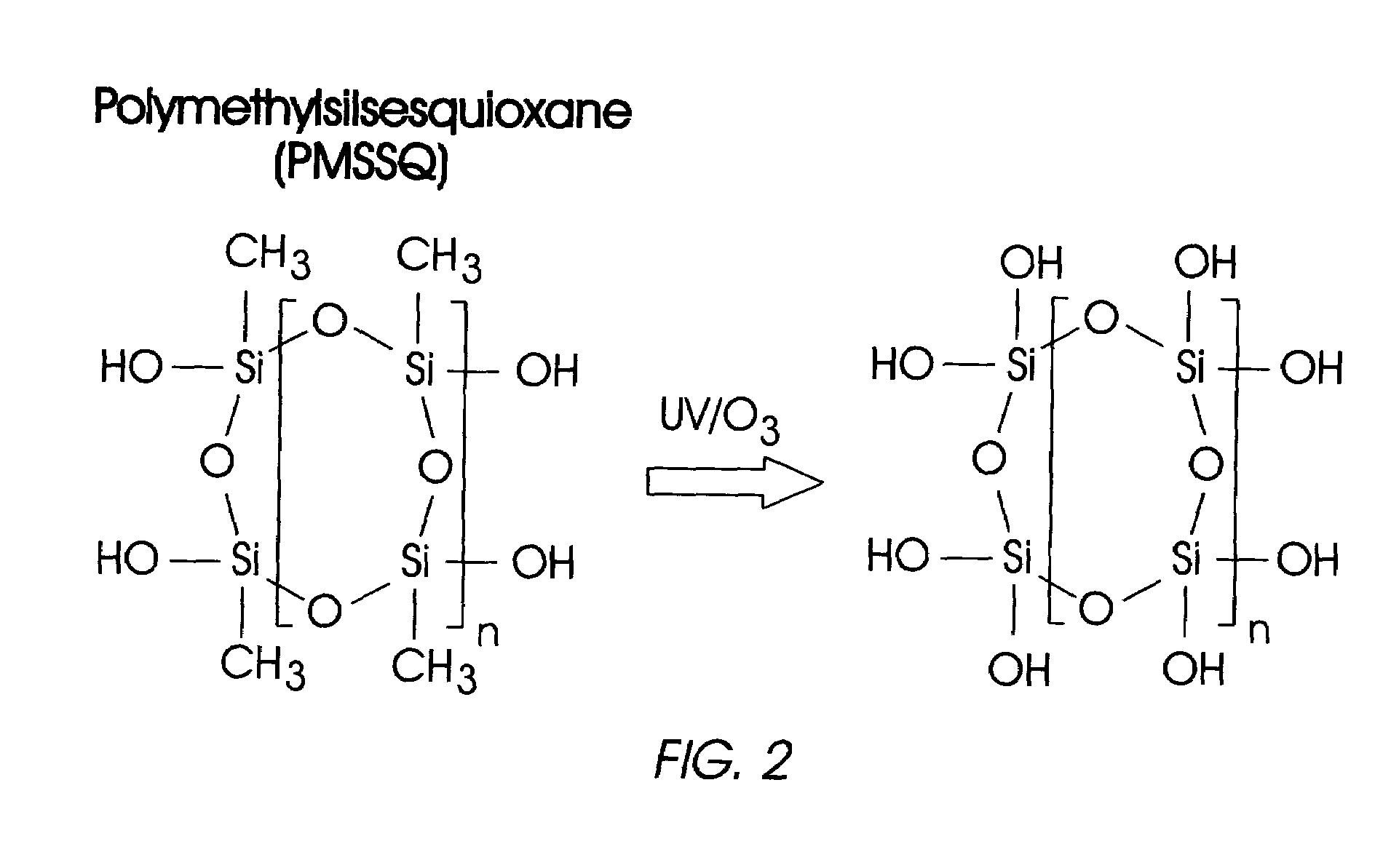Patterned, high surface area substrate with hydrophilic/hydrophobic contrast, and method of use
a substrate and hydrophilic technology, applied in the field of forming arrays, can solve the problems of site directly affecting the reliability of resultant data, limited areal density, irregular shape and composition of spots (and thus reaction sites), etc., and achieves the density of potential reaction and/or absorption sites significantly, simple and effective methods
- Summary
- Abstract
- Description
- Claims
- Application Information
AI Technical Summary
Benefits of technology
Problems solved by technology
Method used
Image
Examples
example 1
[0039]Static water contact angle measurements were made with an AST Video Contact Angle System 2500 XE to quantify the effect of UV / Ozone treatment (like that shown in FIG. 1D) on the surface properties of porous PMSSQ films (like that shown in FIG. 1C). FIG. 3 shows the contact angle as a function of treatment time for porous film produced from starting material of 80 wt. % porogen / 20 wt. % organosilicate. (Films of 10, 30, and 50 wt. % porogen were examined as well, and gave substantially similar results; films with a higher initial wt. % of porogen have greater porosity following decomposition of the porogen.) There is a rapid decrease in the contact angle over time, indicating that the surface is becoming more hydrophilic. This phenomenon is accelerated at higher temperatures, as a comparison between the data at 30° C. and 150° C. shows. A still more rapid decrease in the contact angle was observed at 250° C. The water contact angle decreases from more than 100 degrees initially...
example 2
[0040]By limiting UV exposure to those areas on a film corresponding to open areas within a metal mask (as shown by the mask of FIG. 1D, for example), hydrophilic patterns in a hydrophobic matrix can be obtained. In this case, only those areas on the film exposed to both UV and ozone become hydrophilic, while unexposed areas remain hydrophobic. Masks or schemes which create patterns of UV light are useful for this patterning. The result of such a patterning process is demonstrated in FIG. 4, which shows porous PMSSQ (on a 1″ silica wafer) on which water droplets are confined to ¼ inch diameter hydrophilic areas.
example 3
[0041]When hydrophilic areas are reduced in size to the point that they have a characteristic dimension (i.e., an approximate width or length) of 250 microns or less, the surface tension of water prevents the formation of well-defined drops (like those shown in FIG. 4), so that only wavy shapes at the water / surface / air contact line are evident, indicating that probe molecules in aqueous solution can be confined to the hydrophilic patterned areas. Indeed, the surface hydroxyl groups generated by UV / Ozone treatment are themselves useful for chemical reactions for bonding probe molecules covalently.
[0042]To demonstrate that a higher number density of —OH groups is available within a i) UV / ozone treated porous organosilicate medium than either ii) a flat silica substrate that was not treated with UV / ozone or iii) non-porous MSSQ treated with UV / ozone, a fluorescent dye was used. Specifically, the linker 3-bis(2-hydroxyethyl) amino propyl triethoxysilane was attached to —OH groups on rep...
PUM
| Property | Measurement | Unit |
|---|---|---|
| water contact angle | aaaaa | aaaaa |
| water contact angle | aaaaa | aaaaa |
| pore size | aaaaa | aaaaa |
Abstract
Description
Claims
Application Information
 Login to View More
Login to View More - R&D
- Intellectual Property
- Life Sciences
- Materials
- Tech Scout
- Unparalleled Data Quality
- Higher Quality Content
- 60% Fewer Hallucinations
Browse by: Latest US Patents, China's latest patents, Technical Efficacy Thesaurus, Application Domain, Technology Topic, Popular Technical Reports.
© 2025 PatSnap. All rights reserved.Legal|Privacy policy|Modern Slavery Act Transparency Statement|Sitemap|About US| Contact US: help@patsnap.com



